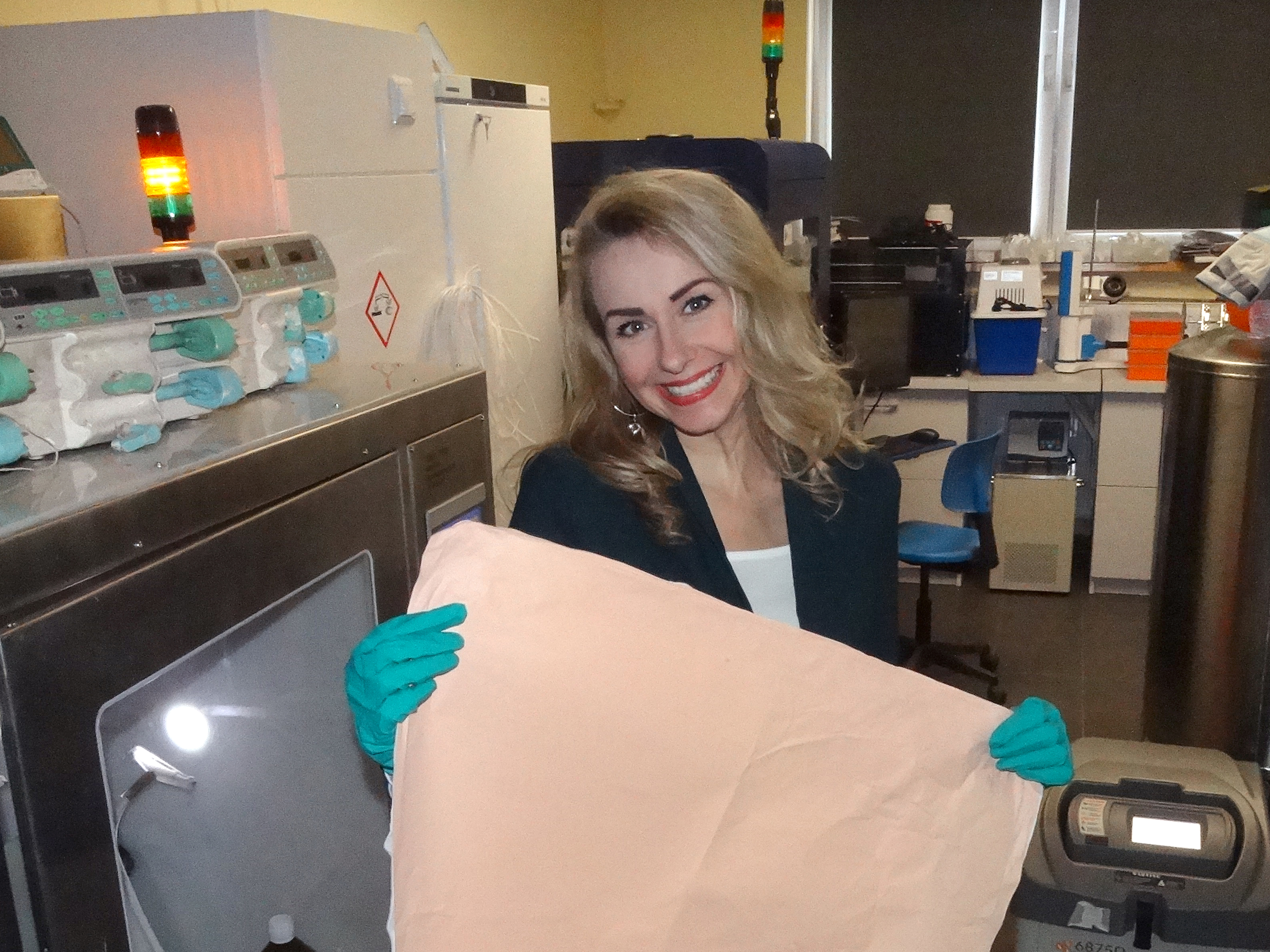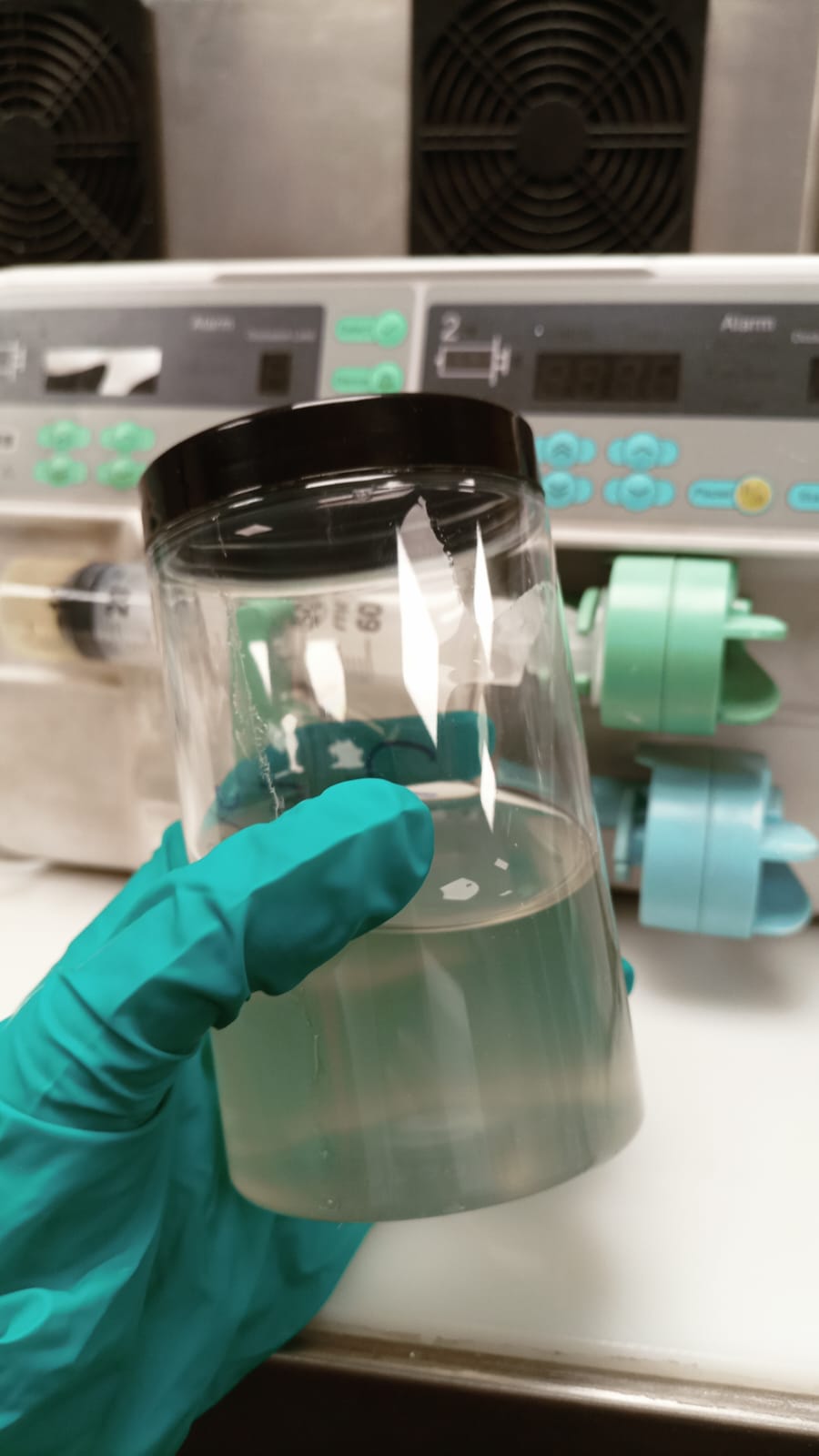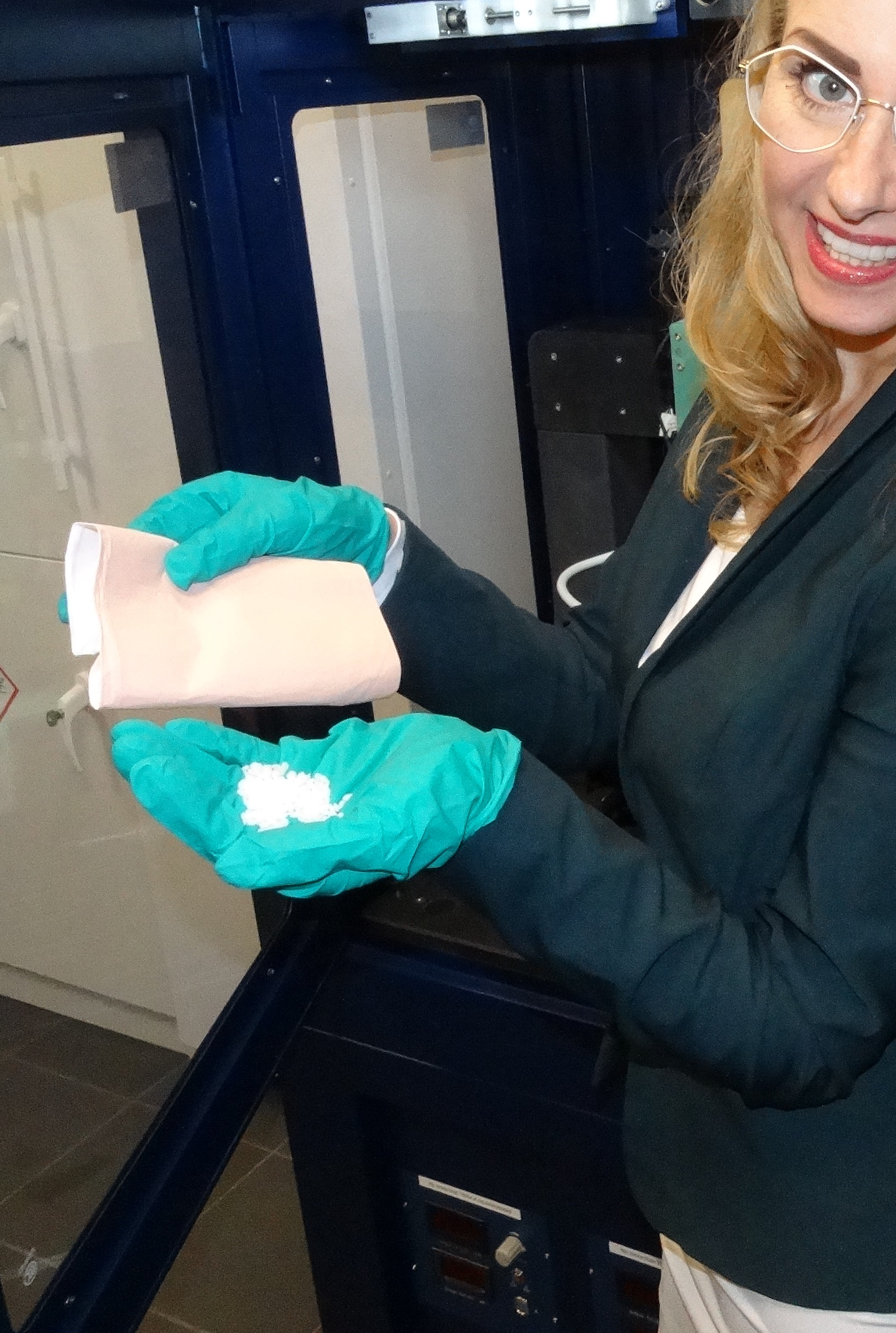With this material you can say "bye, bye" to skin abrasions. It was invented by a Polish entrepreneur. This is an innovation that can improve the quality of life, especially for obese people.
"I'm eating sour soup, are you in a hurry or can I finish my meal?" – I heard in the phone when I called to talk about the project.
I like such people the most. Unpretentious, cordial and direct.
The person I called was Urszula Markowicz-Jureczko, an entrepreneur who has been operating in the area of cosmetics, cosmetology and medicine for many years, owner of the AXYZ company. She is particularly interested in natural medicine. She calls herself a "naturopath focused on helping people".
After an hour I called her again. I wanted to learn more about her invention.
 Urszula Markowicz-Jureczko and the innovative "patch" (photo: Andrzej Hudecki)
Urszula Markowicz-Jureczko and the innovative "patch" (photo: Andrzej Hudecki)
Innovation on a global scale
"We have created a product that does not exist in the world yet" - declares the entrepreneur.
This product is a material (to put it simply, a patch) that is designed to protect the skin against abrasions. The material was created primarily for obese people, especially children. But not only. Athletes and pregnant women are also at risk of abrasions.
Obese people can stick it on places particularly exposed to abrasions (e.g. thighs, groin, under the breasts, under the arms). The idea is to prevent skin abrasions. As the entrepreneur declares, this product is also good for people who move a lot and therefore may suffer from abrasions.
Pain that discourages activity
"Especially young people experience pain caused by skin abrasions on a daily basis. It causes aversion to various forms of activity, which translates into health. Resignation from exercise occurs especially during hot weather during the holidays. And it was the sight of children and young people having problems with normal movement due to numerous abrasions that initiated the creation of our project" - explains Urszula Markowicz-Jureczko in an interview with rdimpact.pl.
Currently used methods for abrasions (e.g. aloe, powder, potato flour) or methods to prevent abrasions (e.g. powders, lubricants, creams) do not solve the problem of abrasions and are not suitable for everyone, e.g. due to allergies.

Polymer liquid that is filled in a device for printing an innovative material (photo: Urszula Markowicz-Jureczko)
Polymer patent
The patch is made of natural polymers, which are one of the basic building blocks of living organisms (natural polymers are e.g. cellulose, proteins, nucleic acids). Polymers have the shape of fibers. As part of the project, scientists checked how these fibers behave when filled with various substances, e.g. aloe, lanolin or warming ointment.
"We checked the behavior of polymers when filled with 11 substances. We already have a patent that covers the situation in which our product is soaked in avocado oil, aloe, shea butter, lanolin and hyaluronic acid" - says my interlocutor.
The result is a flexible material that is very pleasant to the skin. Clinical studies have proven that it does not cause allergies or irritations. The patches nourish and care for the skin.
"It is also important that the patch prolongs the release of the substances contained in it. For example, if we apply a warming ointment to the painful area, its effect will wear off after a relatively short time. However, thanks to the patch, the substance is released gradually and can work longer" - says Urszula Markowicz-Jureczko.
A product with potential
Our conversation also touches upon the medical use of the material. The originator of the project emphasizes that it would potentially be possible to use these patches, e.g. in the treatment of diabetic foot or pressure sores.
"The use of the patch as a medicine in the case of perforated epidermis would require very expensive clinical trials, for which there were insufficient funds from the grant" - notes Urszula Markowicz-Jureczko.
 Work on an innovative "patch" (photo: Andrzej Hudecki)
Work on an innovative "patch" (photo: Andrzej Hudecki)
Scientific basis
The material was created in cooperation with scientists.
"The project manager was Dr. Eng. Andrzej Hudecki, an extraordinary man, one could say the brains behind the operation" - my interlocutor emphasizes.
He is the leader of the team researching polymeric materials and biomaterials at the Institute of Non-Ferrous Materials in Gliwice, Poland. The Institute is part of the Łukasiewicz Research Network.
Most of the specialized tests were performed at the Medical Faculty of the University of Rzeszów. Everything was supervised by Artur Cieślar-Podbuda from the Center for Molecular Medicine Norway, who supervised every stage of research work and provided opinions on every action taken.
Brilliant niece
I'm curious how the idea for this project came about. Urszula Markowicz-Jureczko says that the originator of the idea is actually her niece Daria.
"I once talked to Daria about the idea of creating such wrinkle patches. Back then, Daria was a slightly rounder person who, when she got abrasions during the warmer spring days, had sores until the fall. She suggested that I should do something that would help people struggling with similar problems" - my interlocutor emphasizes.
Throughout our conversation, I feel great pride radiating from Urszula Markowicz-Jureczko. You can see that she is genuinely happy with what she and her team have achieved. She tells me an interesting story that gave her wings.
"I recently presented my project at a conference at the Polish Agency for Enterprise Development. At one point, an older lady stood up and said that this was the product she was looking for. Recently, her grandson had abrasions in his groin, he was even ashamed to show these abrasions. They used flours, talcs and ointments. It worked, but they had to do it very often, even every half an hour" - says my interlocutor.

Commercialization in progress
I ask her what's next. The patch is not yet mass produced and cannot be purchased in stores.
"I want to commercialize this invention. I am in talks with several companies" - declares Urszula Markowicz-Jureczko.
I can only keep my fingers crossed. Especially for commercialization and these expensive clinical trials, because the matter also concerns me. When I was in New York for the first time a few years ago, I fell in love with this city. I took the subway as far north as I could, to the Bronx. It was a hot day. I walked several dozen kilometers to the southern edge of Manhattan. Do I have to tell you that I couldn't walk for a week because of the abrasions?
The project "Development of a new protective material for prophylactic and regenerative purposes with optimal adhesion properties to the body surface of obese children” received PLN 402.500 co-financing from the Norway Grants under the Business Development and Innovation Programme.
I encourage you to visit the AXYZ website, where you can read about the project.
Author of the article: Paweł Nowak (Department of Assistance Programmes, Ministry of Development Funds and Regional Policy)
